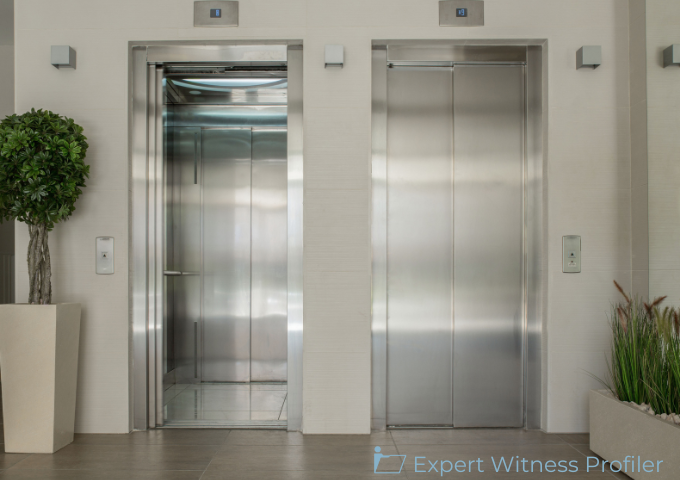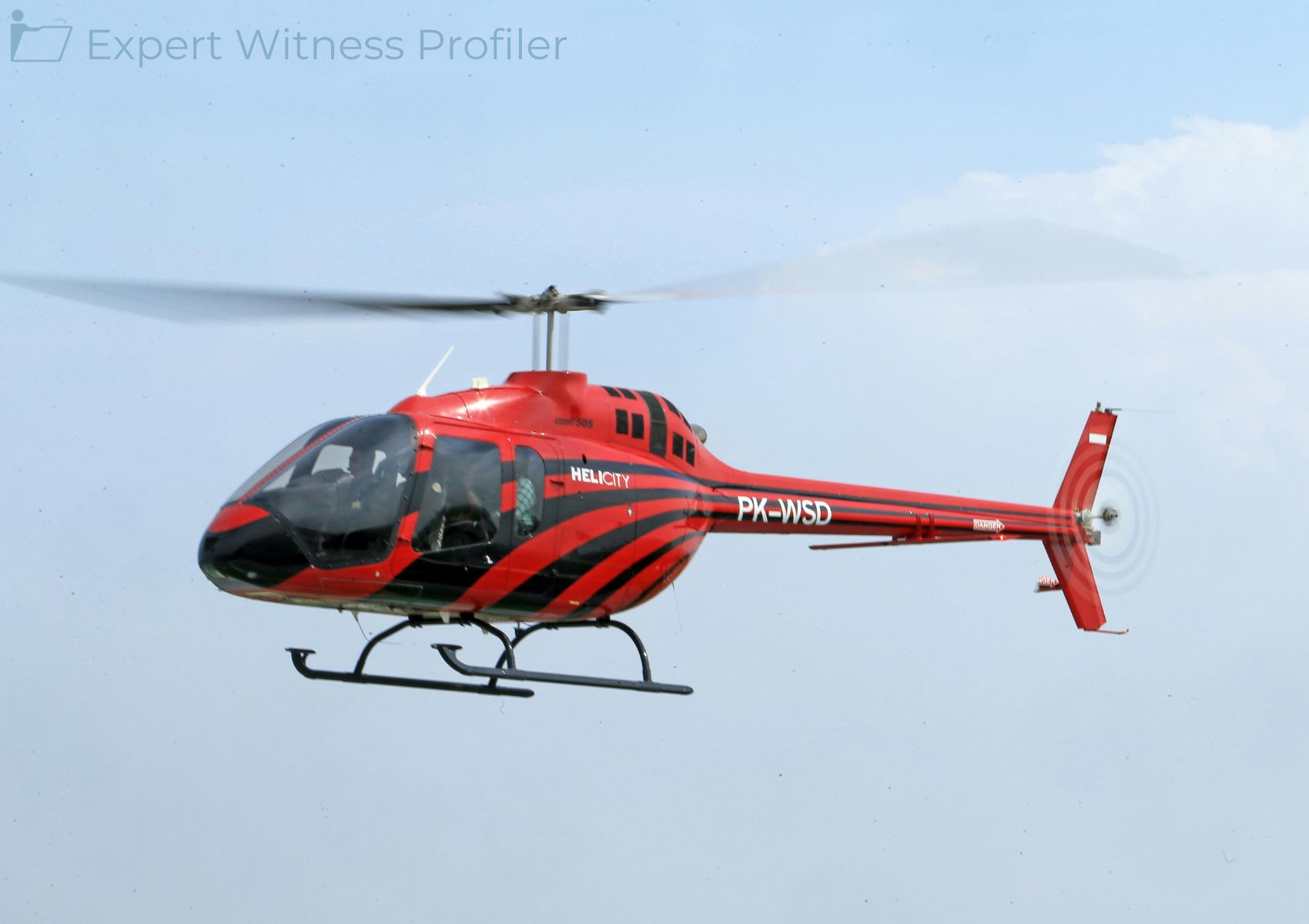Elevator and Escalator Expert Witness’ Testimony on Elevator Malfunction Admitted
Posted on February 3, 2025 by Expert Witness Profiler
In September 2019, Plaintiff Nathan White, a security guard at the Cosmopolitan Hotel in Las Vegas, inhaled fumes from a malfunctioning elevator while responding to a smoke alarm in the elevator’s brake room. Days later, Defendant TKE’s (formerly known as Thyssenkrupp Elevator) employees recklessly destroyed the relevant elevator parts. Plaintiff sued Defendant TKE under strict products liability and negligence theories.
It has been 10 years since TKE designed, manufactured, assembled, sold, and installed the TAC 50-04 elevator. The company also exclusively maintained the elevator. In 2019, TKE complied with Nevada’s annual inspection by hiring a third-party company to inspect the elevator, including the brakes. Limited records indicated that the exterior parts of the elevator brake apparatus had been inspected during a June 2019 service call. However, it should be noted that TKE did not perform its annual “brake teardown” maintenance that year, which its own internal procedures required.
Both parties hired elevator experts to explain why the elevator brake malfunctioned. TKE’s expert, John Halpern, concluded that TKE had taken reasonable care to maintain the elevator. However, an unpredictable malfunction in the bushing of the brake arm allowed the brake pad to rub on the brake drum, leading to smoke in the brake room.
Plaintiff’s elevator and escalator expert witness, John Koshak, disagreed, concluding that the elevator brake failed as TKE had failed to undertake adequate preventative maintenance. TKE moved to exclude Koshak’s testimony.

Elevator and Escalator Expert Witness
John Winfield Koshak has worked in the elevator industry for the last several decades. He belongs to the American Society of Mechanical Engineers (ASME) and the American National Standards Institute (ANSI), he is a certified elevator inspector, and he has earned various other accolades and accomplishments in the world of elevators.
Discussion by the Court
1. Qualified by Knowledge, Skill, Experience, or Training
According to the Fed. R. Evid. 702, the Court was required to consider whether Koshak was qualified by knowledge, skill, experience, and training to opine on this case.
Plaintiff hired Koshak to testify about faults in the Defendant’s maintenance of the elevator.
At the hearing, Defendant argued that while Koshak may be qualified as an expert on elevators generally, he is not an expert on the model of the elevator that malfunctioned. To survive Defendant’s motion to exclude Koshak, it would be enough to show that Koshak was qualified to speak about elevator maintenance generally. It should be noted that Koshak worked in elevator design at TKE’s predecessor company while the relevant elevator was being developed. Moreover, he has also been found qualified to speak as an expert by other courts.
The Court held that Koshak’s qualifications from professional societies, his experience working in elevator design at Defendant’s predecessor company while the relevant elevator was being developed, and his qualification as an expert by other courts qualified Koshak to opine about elevator maintenance and mechanics in this case.
2. Helpfulness to the Jury
Under Fed. R. Evid. 702(a), the Court must consider whether Plaintiff has shown that Koshak’s technical knowledge about elevator maintenance and analysis of the incident at the Cosmopolitan will help the jury understand the evidence.
The Court found that Koshak is more than familiar with industry standards for elevator maintenance, understands how to interpret elevator fault codes and maintenance logs, and has demonstrated that he could answer questions about how elevators work.
It was noted that the element of breach in the Plaintiff’s negligence case would require the jury to assess the standard of care for maintaining elevators and interpret circumstantial evidence. It may also require a high-level understanding of how elevators work.
In conclusion, the Court found that Koshak’s specialized knowledge would be useful to the jury, and held that Plaintiff has met his burden to show as much.
3. Sufficient Facts or Data
According to Fed. R. Evid. 702(b), the Court was required to consider whether Koshak’s testimony was based on sufficient facts or data.
The Court found that Koshak has used sufficient data to reach at least some of the conclusions in his report. He used relevant ASME standards in assessing elevator maintenance; and he reviewed and interpreted the fault logs, error codes, and available maintenance records from the subject elevator.
Defendant argued that specific paragraphs in Koshak’s report and statements from his deposition revealed that Koshak did not sufficiently consult the record for his testimony and that he lacked knowledge of important facts of the case, like which elevator arm malfunctioned.
However, Plaintiff contested the salience of these errors. The Court found that Plaintiff had shown that Koshak used sufficient data and facts to survive a motion to exclude his testimony entirely. While Defendant may later seek to exclude specific sections of Koshak’s report or limit the scope of Koshak’s testimony, it has failed to show that any alleged errors justify excluding Koshak’s entire report.
4. Reliable Principles and Methods
Under the Fed. R. Evid. 702(c)., the Court had to consider whether Plaintiff had shown that Koshak’s testimony was the product of reliable principles and methods.
The Court observed that Koshak’s testimony relied on translating and interpreting elevator fault codes, maintenance standards, maintenance logs, and the function of elevator components like the bushing (the component that seemed to have failed). It was held that Koshak’s interpretation of these codes, standards, and maintenance logs, as well as his explanation of how components function, could be replicated and challenged in an objective sense by reference to authoritative sources.
Additionally, Defendant challenged Koshak’s “deductive” method as unreliable. Koshak’s deductive method involves considering several possibilities of what caused the elevator malfunction, eliminating the ones that seem unlikely, and positing that the remaining causes are likely. The Court found that Koshak’s testimony used reliable methods and principles.
5. Reliable Methods Applied to Relevant Facts
Under Fed. R. Evid. 702(d)., the Court held that Plaintiff had shown that Koshak’s opinion reflects an application of reliable principles and methods to the facts of the case.
To sum up, Koshak applied his knowledge of maintenance standards and methods of translation and interpretation of technical codes to the maintenance records, fault logs, opposing expert report, and deposition testimony relevant to the case.
Conclusion
The Court held that Koshak was qualified as an expert under FRE 702. At the November 15 hearing, the parties requested an evidentiary hearing regarding both experts. To the extent the parties wish to challenge the scope of expert testimony, the Court will entertain motions in limine identified in the proposed joint pretrial order and consider at that point the need for an evidentiary hearing.
Held
The Court denied Defendant’s motion to exclude Plaintiff’s elevator and escalator expert witness John Koshak.
Key Takeaway:
Koshak’s expert testimony satisfied all four requirements under Federal Rule of Evidence 702.
- Despite lacking a college degree, the Court found that Koshak’s extensive industry experience, professional certifications, and previous work with TKE’s predecessor company qualified him to testify about elevator maintenance. The Court rejected TKE’s argument that Koshak needed specific expertise with regard to the exact elevator model in question.
- The Court recognized that Koshak’s technical knowledge would be invaluable in helping the jury understand complex elevator maintenance standards and fault codes, which were crucial for determining if TK Elevator breached its duty of care.
- The Court found that Koshak based his conclusions on sufficient data, including ASME standards, fault logs, and maintenance records, even though there were some minor factual discrepancies.
- The Court deemed his methodology reliable, particularly his systematic approach to analyzing fault codes and his “deductive method” of eliminating unlikely causes of malfunction.
Case Details:
| Case caption: | White V. Tk Elevator Corporation |
| Docket Number: | 2:21cv1696 |
| Court: | United States District Court for the District of Nevada |
| Dated: | January 29, 2025 |





